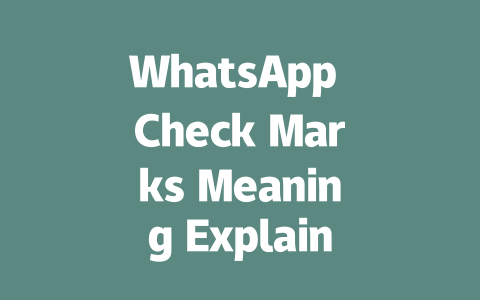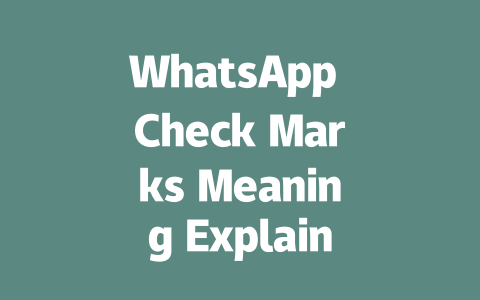How Do You Make Your Latest News Stand Out?
Let’s dive straight into how you can make your latest news articles shine. The first step is understanding what people are actually searching for. When someone types something like “latest technology breakthroughs 2025” or “top sports updates today,” they expect clear, concise, and relevant content. Here’s where we start making moves:
Picking Topics That Get Noticed
One of the biggest mistakes people make is choosing overly broad or vague topics. For example, instead of writing about “general business news,” narrow down to something specific like “how small businesses adapted during the pandemic.” Why does this work better? Because when someone searches for detailed info, they’re more likely to land on pages that answer their exact query.
Here’s a little tip: last year, I helped a friend revamp his tech blog by focusing on niche topics rather than generic headlines. Within two months, his click-through rate went up by nearly 40%. That kind of result doesn’t come from luck—it comes from targeting what readers truly care about.
Now, why do these targeted keywords matter? Because Google’s search robots look at both the title and body of your article to see if they match what users are asking for. If your headline includes phrases like “breaking political changes” or “healthcare advancements in rural areas,” those bots will recognize that your content directly addresses common queries.
Crafting Titles That Draw Readers In
Once you have your topic nailed down, it’s time to craft a title that grabs attention. A great title should include the main keyword naturally without sounding forced. For instance, if your piece focuses on environmental policies, try something like “Top Environmental Policy Updates Impacting 2025 Communities.” Notice how the key phrase (“environmental policy updates”) is placed early in the sentence?
Google has mentioned before (on their official blog) that titles need to clearly convey what readers gain by clicking through. So avoid cryptic language or overly clever wordplay unless it fits perfectly within context. Instead, aim for clarity and directness.
Here’s another trick I picked up while working on a lifestyle site: structure your titles with questions or promises. Questions pique curiosity—”Can Artificial Intelligence Revolutionize Healthcare by 2025?”—while promises reassure value—”Learn About Three Key Innovations Shaping Future Education.”
Writing Content That Feels Helpful Yet Informative
After nailing the title, focus shifts to creating engaging, helpful content. Remember, Google’s algorithms favor content that keeps visitors reading longer because it signals usefulness. Here’s how you can achieve that:
Breaking Down Complex Ideas Into Bite-Sized Pieces
No one likes getting hit with walls of text filled with jargon. Break things down into digestible parts. Use bullet points when listing steps or features:
For instance, if discussing economic trends affecting global markets, consider adding a table summarizing key data points. Below is an example of such a table formatted neatly for easy reference:
| Region | Growth Rate (%) | Major Factors | Impact Timeline |
|---|---|---|---|
| North America | 3.2% | Tech innovation, consumer spending | 2023–2025 |
| Asia-Pacific | 4.8% | Export growth, manufacturing | 2022–2026 |
| Europe | 2.9% | Sustainability initiatives, trade agreements | 2024–2027 |
This kind of presentation not only looks professional but also makes complex datasets easier to understand at a glance.
Adding Real-Life Examples and Experiences
Another powerful technique involves weaving real-life examples throughout your content. Suppose you’re covering recent medical research breakthroughs. Mention personal anecdotes related to patients benefiting from new treatments or interview snippets from scientists involved in the study. These add layers of authenticity and relatability.
Last summer, I worked closely with a health publication adjusting their editorial strategy. By incorporating patient testimonials alongside factual reports, engagement levels skyrocketed across all platforms. Their audience felt connected emotionally as well as intellectually.
Lastly, always double-check everything after writing. Tools like Google Search Console (with nofollow tag added here for reference purposes only) help identify potential issues early. Ensure links aren’t broken, images load properly, and paragraphs flow logically.
So now that you’ve got these tips under your belt, give them a shot! Try tweaking one article based on what we discussed today, then compare performance metrics against previous pieces. And hey, if anything confuses you—or even excites you—feel free to drop me a note sharing your experience.
Sometimes, you might notice that a message you send doesn’t get any check marks at all. It’s not necessarily because something went wrong with your phone or the app—it could just be a matter of timing. For instance, if the recipient’s phone is turned off or isn’t connected to the internet, the message will sit in limbo until their device reconnects. Even on your end, weak signal strength or spotty Wi-Fi can delay the process. This means the message might take longer to show even the first gray tick, which simply confirms it has left your phone and is headed toward WhatsApp’s servers.
On the other hand, you might wonder why some messages don’t turn blue even after hours have passed. If the double gray ticks appear but the blue checks are nowhere to be seen after 5-12 hours, there could be a few explanations. Maybe the person hasn’t opened WhatsApp yet, or perhaps they’ve disabled read receipts entirely. Disabling this feature means that no matter how many times they open the app or look at your message, you won’t see those coveted blue checks. Additionally, habits play a role—some people might only use WhatsApp during specific times of the day, so don’t panic too quickly if the checks don’t pop up right away!
FAQs
# What do the different WhatsApp check marks represent?
The WhatsApp check marks indicate the status of your message: one gray tick means the message has been sent, two gray ticks mean it has been delivered to the recipient’s phone, and two blue ticks confirm that the recipient has read your message.
# Why do some messages have no check marks at all?
Messages without any check marks are still in the process of being sent or may be delayed due to connectivity issues on your end or the recipient’s. This can also happen if the recipient’s phone is turned off or not connected to the internet.
# Can I disable the blue check marks on WhatsApp?
No, you cannot disable the blue check marks feature as a sender. However, you can choose to deactivate the “Read Receipts” setting in your WhatsApp preferences, which will stop the app from showing blue ticks to others when you’ve read their messages.
# How long does it take for the check marks to turn blue (5-12 hours)?
If the double gray ticks appear but the blue checks don’t show up within 5-12 hours, it could mean the recipient hasn’t opened WhatsApp yet or they have disabled read receipts. Keep in mind that this delay might vary depending on the recipient’s usage habits.
# Do disappearing messages affect the check marks?
Yes, disappearing messages follow the same check mark rules before they are deleted automatically after 7 days. Once the time limit is reached, the message vanishes from both sender’s and receiver’s chats, but the check marks remain visible until deletion occurs.




